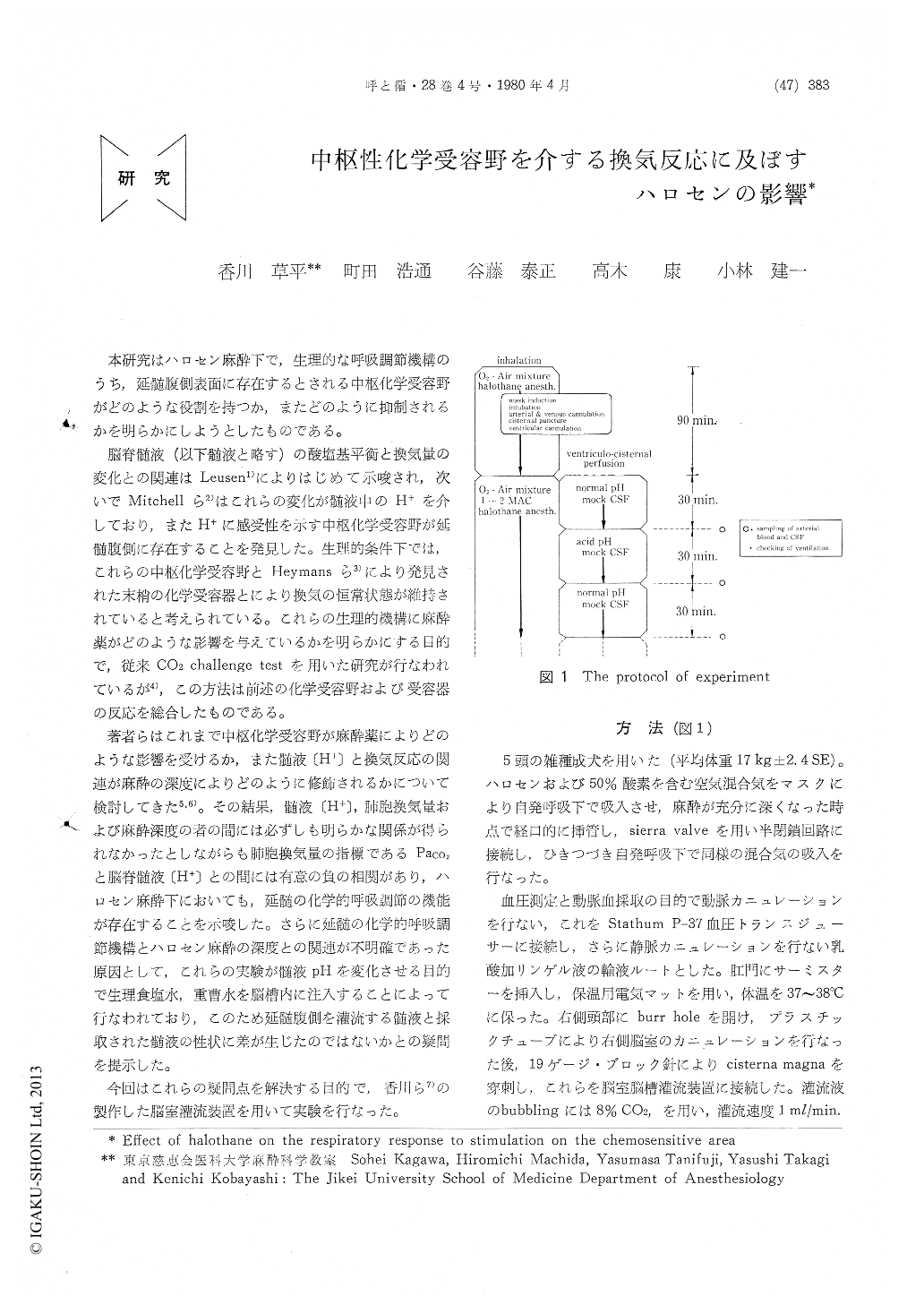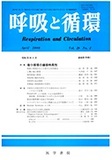Japanese
English
- 有料閲覧
- Abstract 文献概要
- 1ページ目 Look Inside
本研究はハロセン麻酔下で,生理的な呼吸調節機構のうち,延髄腹側表面に存在するとされる中枢化学受容野がどのような役割を持つか,またどのように抑制されるかを明らかにしようとしたものである。
脳脊髄液(以下髄液と略す)の酸塩基平衡と換気量の変化との関連はLeusen1)によりはじめて示唆され,次いでMitchellら2)はこれらの変化が髄液中のH+を介しており,またH+に感受性を示す中枢化学受容野が延髄腹側に存在することを発見した。生理的条件下では,これらの中枢化学受容野とHeymansら3)により発見された末梢の化学受容器とにより換気の恒常状態が維持されていると考えられている。これらの生理的機構に麻酔薬がどのような影響を与えているかを明らかにする目的で,従来CO2challenge testを用いた研究が行なわれているが4),この方法は前述の化学受容野および受容器の反応を総合したものである。
Halothane produces a dose-related depression of respiration as demonstrated by an increase in PaCO2 and a decrease in the slope of the venti-latory response to an imposed increase in PaCO2・ The central nervous system is presumed to be the primary site of this depression but a de-pression of the ventilatory response to specific stimulation of the central chemoreceptor has not been demonstrated. The following experiment now provides such evidence.
After mask induction with halothane and oxygen, 5 dogs were intubated orally, and a 50% O2-air mixture containing halothane was inhaled under spontaneous ventilation. Cannulation of the cerebral ventricle and cisterna magna per-mitted ventriculo-cisternal perfusion with two mock cerebrospinal fluids containing hydrogen ion concentration of 63±3 (SEM) nM/L and 86±5 (SEM) nM/L, respectively. Ventilation and other respiratory related variables were ex-amined at the end of a half hour of perfusion with each mock fluid at 1, 1.5 and 2 MAC of halothane.

Copyright © 1980, Igaku-Shoin Ltd. All rights reserved.


